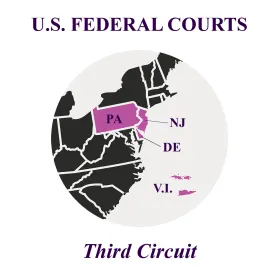As promised (see prior post here), we are providing an update on the Third Circuit’s decision in Care One Management LLC et al. v. United Healthcare Workers East, et al. As we addressed at the time, this cased involved allegations of union extortion against various nursing homes and assisted-living facilities across the Northeast as part of a corporate “campaign” against the facilities. The underlying facts of the case are addressed in greater detail in our original post, but the facilities sued the union, alleging the labor organization violated the Racketeer Influenced and Corrupt Organizations Act (“RICO”) based on its conduct.
In December 2021, the Third Circuit affirmed the trial court’s grant of summary judgment in favor of the union defendants and dismissed the case, finding the unions’ conduct did not rise to the level of extortion required for a civil claim under RICO. Instead of petitioning the Supreme Court to review the Third Circuit’s decision, the facilities requested a panel re-hearing.
Last week, the Third Circuit issued a revised decision after reconsidering the matter. This time, the Third Circuit ruled in favor of the facilities, concluding that a reasonable jury could find the unions authorized or ratified the alleged extortionate acts of its members, and remanded the case back to the District Court for further proceedings.
The Third Circuit also agreed with the facilities’ argument that the required standard of proof for the unions’ liability for its members’ actions is found in section six of the Norris-LaGuardia Act of 1932, rather than the less stringent standard of proof in the Labor Management Relations Act (the “LMRA”) that was originally applied by the trial court (and originally affirmed by the Third Circuit). Section 6 of the Norris-LaGuardia Act requires “clear, unequivocal, and convincing proof” that a union participated in, authorized, or ratified the actions of its members, rather than the “preponderance of evidence” standard of proof generally required by the LMRA.
Now the question of the unions’ liability will likely be up to a jury to decide as this case is set to return to the trial court. We will continue to monitor this case and provide updates as it proceeds to trial.




 />i
/>i
